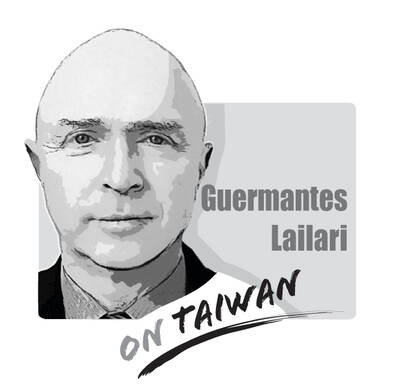Sometimes, it can be easy to forget that we are living through the process of history being made, and how rapidly things can change.
President-elect William Lai (賴清德) has tapped National Security Council (NSC) Secretary-General Wellington Koo (顧立雄) to be the next minister of national defense. In some quarters, this appointment has been applauded, in others it has been met with some reservation. It is not an insignificant move, and has everything to do with the fact that Koo does not have a military background.
Civil-military relations can be tense for historical, political and bureaucratic reasons, and this has certainly been the case for Taiwan. The ability of any nation to ensure that the military is subordinated to the constitutional government is a fundamental requirement, and it would be deeply problematic if the defense ministry was itself part of the country’s military organization and answerable only to itself, or if the leadership system of the military was able to bypass the Ministry of National Defense.
Yet it was only in 2002, when the National Defense Act (國防法) and Organization Act of the Ministry of National Defense (國防部組織法) came into force, that the law stated that the defense minister must be a civilian and that military orders were no longer to pass directly from the president to the chief of the general staff — and must now go via the defense minister — or that the military administration and command systems were to be integrated under the ministry.
Before the enactment of those laws, Taiwan lacked an adequate institutional structure for democratic control of the military.
The military had considerable influence over the governing of the nation following the Chinese Nationalist Party’s (KMT) retreat to Taiwan in 1949. The KMT regime had relied on it for the maintenance of internal security throughout the period of martial law and had nominated active-duty generals to major government positions. For decades, the military enjoyed considerable organizational and political autonomy.
Even after the lifting of martial law in 1987, the process of transitioning to democracy and civilian control over the military would take well over a decade. The reason for the 13-year gap between the lifting of martial law and the passage of the National Defense Act was to ensure a successful democratic transition and reform of civil-military relations.
Even though the defense minister is legally required to be a civilian, the majority have come from a military background. Minister of National Defense Chiu Kuo-cheng (邱國正) is a retired general.
Defense ministers with a military background know the culture and are knowledgeable about the practical aspects of warfare and defense, from personnel and equipment to logistics in the field.
In the same vein, they are perhaps too constrained by that same culture and by entrenched loyalties to be able to effect meaningful reform.
Koo comes from a civilian background, but he has served as head of the NSC since 2020 and brings with him the experience and knowledge of security affairs gained from that position. The fact that he is not steeped in the culture of the armed forces might be the best recommendation for his ability to introduce much-needed reforms and innovations to the military.
At the same time, his appointment will help Lai oversee the completion of the democratic transition and civilian control in the civil-military relations dynamic.
Congratulations to China’s working class — they have officially entered the “Livestock Feed 2.0” era. While others are still researching how to achieve healthy and balanced diets, China has already evolved to the point where it does not matter whether you are actually eating food, as long as you can swallow it. There is no need for cooking, chewing or making decisions — just tear open a package, add some hot water and in a short three minutes you have something that can keep you alive for at least another six hours. This is not science fiction — it is reality.

A foreign colleague of mine asked me recently, “What is a safe distance from potential People’s Liberation Army (PLA) Rocket Force’s (PLARF) Taiwan targets?” This article will answer this question and help people living in Taiwan have a deeper understanding of the threat. Why is it important to understand PLA/PLARF targeting strategy? According to RAND analysis, the PLA’s “systems destruction warfare” focuses on crippling an adversary’s operational system by targeting its networks, especially leadership, command and control (C2) nodes, sensors, and information hubs. Admiral Samuel Paparo, commander of US Indo-Pacific Command, noted in his 15 May 2025 Sedona Forum keynote speech that, as
In a world increasingly defined by unpredictability, two actors stand out as islands of stability: Europe and Taiwan. One, a sprawling union of democracies, but under immense pressure, grappling with a geopolitical reality it was not originally designed for. The other, a vibrant, resilient democracy thriving as a technological global leader, but living under a growing existential threat. In response to rising uncertainties, they are both seeking resilience and learning to better position themselves. It is now time they recognize each other not just as partners of convenience, but as strategic and indispensable lifelines. The US, long seen as the anchor
Kinmen County’s political geography is provocative in and of itself. A pair of islets running up abreast the Chinese mainland, just 20 minutes by ferry from the Chinese city of Xiamen, Kinmen remains under the Taiwanese government’s control, after China’s failed invasion attempt in 1949. The provocative nature of Kinmen’s existence, along with the Matsu Islands off the coast of China’s Fuzhou City, has led to no shortage of outrageous takes and analyses in foreign media either fearmongering of a Chinese invasion or using these accidents of history to somehow understand Taiwan. Every few months a foreign reporter goes to